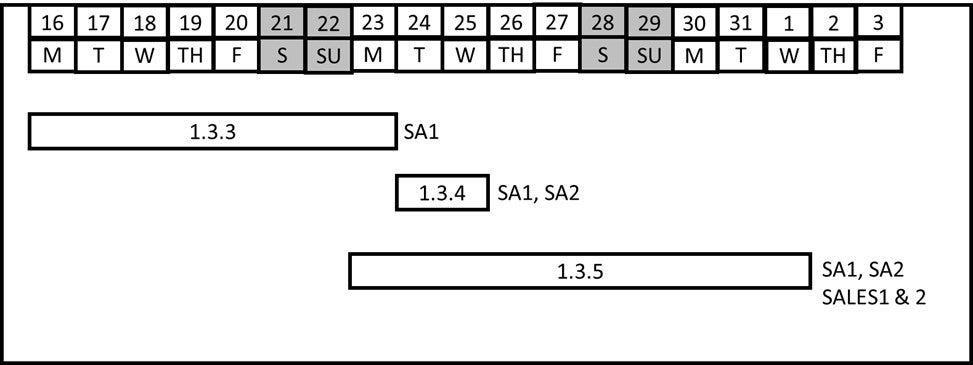Chapter 8. Resource Management
8.5 Solving Resource Overallocation: Resource Leveling
One of the techniques to solve resource conflicts is implementing resource leveling which is used to examine the unbalanced use of resources (usually people or equipment) over time and for resolving overallocation or conflicts. When performing project planning activities, the manager will attempt to schedule certain tasks simultaneously. When more resources are needed than are available, or perhaps a specific person is needed in both tasks, the tasks will have to be rescheduled sequentially to manage the constraint. Resource leveling during project planning is the process of resolving these conflicts. It can also be used to balance the workload of primary resources throughout the project, usually at the expense of one of the triple constraints (scope, schedule, cost).
As we discussed briefly in the previous section, both systems analysts are overallocated. Therefore, we should correct this issue since they cannot work more than 40 hours a week. Resource leveling would be one of the techniques to eliminate this problem. In resource leveling, we still use the same resources without adding new resources. However, this comes with a risk of schedule delay. Gantt Chart for the weeks of May 16, May 23, and May 30 is shown in Figure 8.2. As can be seen in the figure, 1.3.3 and 1.3.5 overlap on May 23, and SA1 works full time in two activities on the same day, which is not possible. Besides, 2-day activity 1.3.4 overlaps with 1.3.5, and both SA1 and SA2 work on both of the activities.

Since resource leveling utilizes the same resources, it may create schedule delays as seen in Figure 8.3. Activity 1.3.4 had to be moved to June 2 from May 24 to prevent any conflicts with 1.3.3 and 1.3.5. Its duration was also increased to 3 days from 2 days. Activity 1.3.5 starts on the same day, May 23. However, its duration was also increased to 9 days from 8 days. Therefore, it finishes on May 2 instead of May 1. For these three activities, we have a three-day delay in total after resource leveling. Sometimes, splitting the tasks could be another option if the activities allow us to do so. This resource leveling could also affect the following activities, which may create a chain effect with more schedule slippages.

Another option to resolve conflicts would be assigning new resources to prevent schedule slippages. A third systems analyst can be assigned to activity 1.3.3 by removing SA1. With the new SA3, we can reallocate SA1 and SA2 in 1.3.4 and 1.3.5 by replacing them with SA3 for the days when SA1 and SA2 have conflicts with other activities. Apparently, this situation would impose additional costs on the project by adding a new systems analyst. However, we can avoid schedule slippages. Thus, the project manager should evaluate all the trade-off options between the schedule and the cost.

